Back in 2019, I assembled a list of the best horror novels ever. This was no mere copy-and-paste job from another website. I trawled all manner of sites and surveys, harvesting the names of those novels which kept on appearing. There were 42 novels on my conglomerate list and, three years later, I have read every one of them.
42 is such an awkward number, though (unless you’re a Douglas Adams fan). Wouldn’t it be great if there had been 50 novels that had kept appearing? 50 must-read horror novels. The 50 best horror novels ever. Well, having read the whole original list, and more besides, I feel qualified to fill in the gaps. Here are the real 50 best horror novels ever – 42 recommended by online horror communities and 8 of my personal recommendations.
Grab your cushions and steel your nerves. These really are the 50 best horror novels… ever.
Memento Mori: 19th Century Horror Novels

Frankenstein; or, the Modern Prometheus – Mary Shelley, 1818
Mary Shelley wrote Frankenstein to “curdle the blood and quicken the beatings of the heart”. It was her attempt to beat Lord Byron and Percy Shelley at writing a scary story during a stay at Lake Geneva. Its themes and concept of a scientist who plays God and creates a living creature from stolen parts of corpses have resonated through the years. Horror begins here…

Carmilla – Sheridan Le Fanu, 1871-72
Le Fanu’s seminal vampire tale predates Bram Stoker’s opus by 25 years. Its gothic, sapphic and bloody visuals laid the template for Hammer Horror a century later. It’s a surprisingly contemporary-feeling read; pacey and gripping. You wouldn’t know it was written over a century ago.
The young narrator, Laura, is staying at an isolated castle when a carriage accident occurs outside. A young girl, Carmilla, is brought to stay at the castle. She doesn’t join in prayers and sleeps by day. Meanwhile, a strange malady appears to kill of the people of a nearby town…

Dracula – Bram Stoker, 1897
A heavyweight entry in the gothic canon, Dracula has plenty of merits to distinguish it from its peers. A epistolary novel comprising diary entries, telegrams and letters, its presentation feels very modern, and its inclusion of (then) modern technology like phonographs and its globetrotting plot marks it as something of a techno-thriller of its day. An essential horror novel.
Our tale begins as lawyer Jonathan Harker visits Count Dracula in Transylvania. The Count does not eat or drink and soon Harker finds himself incarcerated. Later, back in England, a mysterious dark figure begins to haunt Harker’s fiance Mina and her friend Lucy…

The Turn of the Screw – Henry James, 1898
The Turn of the Screw laid many of the foundations of the traditional ghost story. A fire flickers in the hearth as a troubled narrator recounts a disturbing tale of a remote manor house and the strange goings on within that might involve the secretive children of the estate. An unsuspecting (and unnamed) governess arrives at the manor and is plunged into a nightmare of her own…

The Hound of the Baskervilles – Sir Arthur Conan Doyle, 1902
Sherlock Holmes is one of the greatest characters in literature. Yet, rarely does he step into the horror genre. The Hound of the Baskervilles, however, was originally planned to be a straight “Victorian creeper”, and its gothic atmosphere, genuine scariness and lashes of gore make it worthy of this list.
Detective Sherlock Holmes is called in when it appears a family curse, involving a ferocious, supernatural hound, has slain the last-but-one of the Baskerville line. Young Henry Baskerville will be next, unless Holmes can untangle the mystery…
Holmes actually features relatively little in the novel. Instead, Dr Watson finds himself upon the haunted moors, struggling against a foe which may indeed not be of this earth…
Nocturnal Stirrings: Early Modern Horror Novels

At the Mountains of Madness – H.P. Lovecraft, 1936
Scientist William Dyer recounts an ill-fated trip to Antarctica, an adventure which leads to the discovery of a range of mysterious mountains that conceal an ancient city, long forgotten by any living thing on earth. As his tale progresses, the full horror of Dyer’s discovery is made clear.
Lovecraft’s brand of horror centres around the insignificance of earth in the face of ancient cosmic entities. Most of his stories are shorter, but At the Mountains of Madness gives him the sprawl to explore these themes in detail (though The Call of Cthulhu is a good bite-sized entry to his mythos).

Rebecca – Daphne du Maurier, 1938
Rebecca follows in the footsteps of the gothic novels of the 19th century. The unnamed heroine of the novel falls in love with the enigmatic Maxim de Winter, whose home at Manderley Hall is haunted by the memory of his deceased first wife, Rebecca.
Manderley is as much a character as the cast of the novel, and its halls hold the secret of the first Mrs de Winter’s untimely passing. But even our protagonist begins to guess as the truth, we discover all is not as it seems. Rebecca may yet have her revenge on the world she’s left behind…

The Bad Seed – William March, 1954
Before The Omen and The Exorcist popularised evil children, there was The Bad Seed.
Rhoda Penmark is a pretty, sweet, pigtailed eight year-old. But when one of her classmates ends up dead, her mother starts to wonder. Could Rhoda’s prim demeanor conceal the cold, calculating mind of a killer? And if so, is she herself responsible for passing on the bad seed that made her so?
William March’s clipped, proper prose is the ideal vehicle for this exploration of psychological horror.

The Haunting of Hill House – Shirley Jackson, 1959
The Haunting of Hill House is fairly ahead of its time – found footage films of ghost hunters shacking up in haunted houses live in Hill House’s towering, crenelated shadow. It uses an unreliable narrator to chilling effect and manages a few jump scares along the way.
A supernatural investigator and his assistants arrive at Hill House to investigate the supernatural phenomena occurring there. But some of the clues to its hauntings may lie in its residents’ pasts…

Something Wicked this Way Comes – Ray Bradbury, 1962
Bradbury is a pleasure to read, his prose laced with poetry. Themes of childhood and innocence are bound into Something Wicked This Way Comes, a tale of two boys who enter a mysterious carnival where all is not as it seems.

Rosemary’s Baby – Ira Levin, 1967
Rosemary’s Baby is an essay in suspense and a stone-cold classic of the horror genre. Rosemary and her husband Guy move into the apartment of their dreams, dismissing the building’s history of witchcraft and the occult as an urban legend. But Rosemary becomes increasing uneasy as their neighbours take an interest in her relationship and, soon enough, her pregnancy.
Rosemary’s Baby works by stealth. Rosemary’s uncertainty is ours – could her suspicions be real? Could their neighbours gatherings be something other than parties? Might her dimly remembered nightmares be true…?
Golden Age of Grotesque: 70s and 80s Horror Books

Hell House – Richard Matheson, 1971
You know how some books are able to do the job of a horror film and really get the hairs on the back of your neck up? Hell House is one of them. It shares some DNA with The Haunting of Hill House, but while Jackson’s book works by stealth and implication, Matheson is only too happy to bolster the creepiness of his work with violence.
The book concerns a parasychologist and mediums who stay in a haunted house to investigate life after death. Needless to say, the house gives them plenty of material to work with, and things spiral steadily out of control…

The Rats – James Herbert, 1974
Okay, I’ll level with you. This one never popped up on that many lists, but it really deserves a place on mine. The Rats is James Herbert’s debut novel and, while he got a little more literary as he went on, The Rats is a short, nasty, bitey read. His writing has something urgent and raw about it which adds to its horror, as it describes a plague of huge rats that grower ever bolder, attacking the public with increasing viciousness.
The Rats has an overarching narrative and a hero inhabiting it, but it’s punctuated with individual vignettes which keep the horror levels high, and it’s these that stick in your head the longest.

Jaws – Peter Benchley, 1974
Oh, come on. Do I need to explain what this book is about? Jaws was written in 1974 but was quickly eclipsed by its 1975 film adaptation, and has since become synonymous with the summer blockbuster as well as a milestone of thriller cinema. Not ringing a bell? Okay then, let me explain:
At the height of tourist season, the town of Amity, Long Island, finds its waters preyed upon by a great white shark. As the deaths mount, the town’s police chief is pressured by the authorities to keep the beaches open against his better judgement, and soon the only way to stop the shark is to hunt it down.
Anyone who has seen the film (and I’m sure that demographic includes you) might find themselves surprised by some of the changes between novel and movie, as well as by some of the more explicit content in the book’s fleshed-out narrative strands. Like all 70s creature feature horror, Jaws is packed with lurid subplots and randy characters. But no character is more vividly drawn than the shark itself.
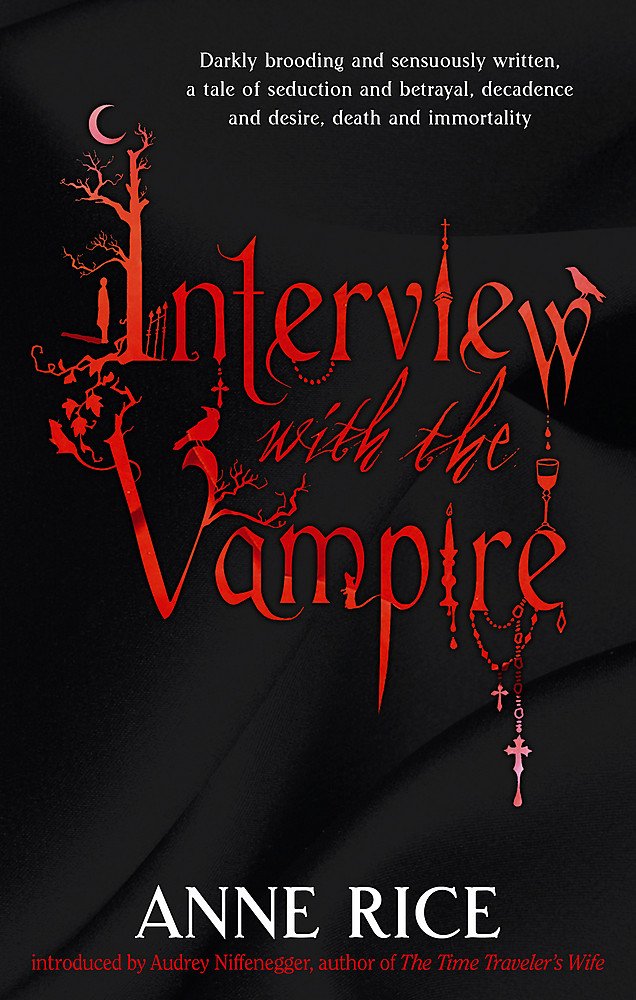
Interview with the Vampire – Anne Rice, 1976
No one did more to update vampires than Anne Rice. Prior to Interview with the Vampire, bloodsuckers were monstrous or seductive archetypes, but Rice makes the personalities of her vampires the heart of her story. The story sees the Byronic vampire Lestat turn Louis into one of his kind, a transformation that will set him on a journey drenched in blood and pain. The novel’s thoughtfulness is weighed beautifully against its goriness and sensuality.

Ghost Story – Peter Straub, 1979
Ghost Story boasts one of the most hooking opening chapters in horror. It’s a sprawling tale of five men who must confront an evil buried deep in their past, and escalates to a trialing climax.

The Elementals – Michael McDowell, 1981
It all begins with a strange rite at a funeral involving an open casket and hereditary blade. From there, McDowell’s Southern Gothic tale takes us to the Gulf coast, where our protagonists are staying near to a house abandoned for so long that the sands have claimed half the building.
The Elementals keeps its cards close to its chest for the most part, digging into the superstitions and relationships between the two families at its core whilst keeping the horror at hand by way of juju rituals and forays into the haunted house. When the terror mounts for the climax, it’s all the more intense for it.

The Woman in Black – Susan Hill, 1983
Susan Hill’s gothic tales are lovingly constructed, crafted to feel like the classic ghost stories of the past. The Woman In Black beings with tales round a fire, and concerns a scholarly young solicitor summoned to an isolated mansion on the coast. The book delivers on the promises set by its premise.
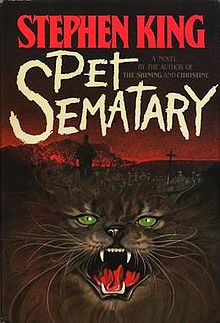
Pet Semetary – Stephen King, 1983
Stephen King is the most prolific writer of horror in the world. His impressive oeuvre encompasses over fifty novels, but Pet Semetary, the story of a graveyard where all that is buried might not stay down, seems a reader’s favourite.
Compared to his other works, Pet Semetary is quite a low-key affair, basing itself in family drama and pledging its cause to a particularly mournful, bleak brand of horror. Perhaps not the best introduction to King’s work, but one which has struck a particular chord with his fans.
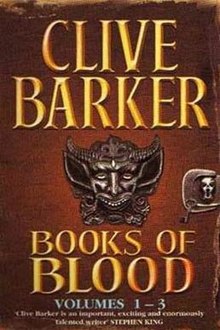
The Books of Blood – Clive Barker, 1984-85
Clive Barker is a visionary, his stories startlingly original and impeccably written. He writes novels, but remains renowned for the Books of Blood, six volumes of five or six short stories, which provide some of the most horrifying Grand Guignol narratives ever. Things get very gory and definitely not for those of a sensitive disposition, but Barker is too much the craftsman for things to feel exploitative or gratuitous.

Beloved – Toni Morrison, 1987
Beloved isn’t a horror novel, but it appears on a great deal of must-read horror lists. To its credit, it is set in a horrifying world, that of black slavery. It may also feature ghosts, though Morrison’s metaphor-heavy prose keeps things ambiguous.
Beloved was inspired by the true story of a slave who murdered her own child rather than see her captured and taken back into slavery. In the story that slave is Sethe, who lives in Ohio, now freed. She believes her home is haunted and, when one of the other slaves she worked with returns to her, the past is stirred up. Soon after, a mysterious young woman arrives at Sethe’s house. She is the same age as Sethe’s murdered daughter would have been…

The Silence of the Lambs – Thomas Harris, 1988
In many ways, The Silence of the Lambs killed the horror novel. It supplied horror aficionados with all the gore and menace of a nasty paperback, but it was grounded in the realism of police procedure, not in the realms of fantasy or the supernatural. After The Silence of the Lambs, horror writers begged to have their books marketed as thrillers. It didn’t hurt that the novel’s breakout character, the cultured cannibal Dr Hannibal Lecter, was as instantly classic as any established horror film killer.
The novel follows the progress of FBI recruit Clarice Starling as she hunts a serial killer known as Buffalo Bill. She is mentored by an incarcerated Lecter and their exchanges form the tension at the heart of the book. It’s a gripping page turner, all too often overshadowed by its faithful film adaptation.

The Fifth Child – Doris Lessing, 1988
The Fifth Child may be from the tail-end of the eighties, but it feels like a much older ghost story. Harriet and David Lovatt want more than anything for a houseful of beautiful children. But their fifth child, Ben, is pale and ugly, violent and unlikeable. Harriet is afraid what she has given birth to.
The Fifth Child is a horror story on one level, but it’s also the sad tale of a child born into the wrong family – or perhaps something more. A contemporary gothic chiller.

The Girl Next Door – Jack Ketchum, 1989
Jack Ketchum is at the cutting edge (as it were) of horror. His books are lethally lean and spare no detail when it comes to splatter and gore. They grab you by the throat make you keep your eyes open even as the horror within them unfolds.
In The Girl Next Door things have an especially unsavoury flavour. We see through young David’s eyes as his neighbour Ruth, and her three boys take in an innocent teen, Meg, and her sister Susan after their parents are killed. The girls are kept imprisoned and their cruel treatment steadily escalates. Ketchum’s master stroke is in making the reader feel as complicit in their actions as narrator David. As with all of his work: approach with caution.

Carrion Comfort – Dan Simmons, 1989
It begins as three ‘mind-vampires’ – people with the Ability to bend others to their will and use them as they wish – meet to discuss the crimes and atrocities they have committed that year. But the trio are betrayed. Their evil alliance is ripped apart in a night of murder and mayhem.
Trying to make sense of it all is Sheriff Rob Gentry. Together with Natalie, daughter of a slain bystander, and Saul, a deathcamp survivor with old links to one of the vampires, the investigators are plunged deeper into an ever-evolving mystery…
Carrion Comfort is a sprawling, epic thriller. Near 1000 pages long, it tracks the hunt of its villains whilst giving its readers an uncomfortable glimpse into its monsters’ minds.
Fresh Hell: 90s and 00s Horror Books

Ring – Koji Suzuki, 1991
Ring is the only Japanese horror novel that pops up frequently on lists of the best horror novels ever around the internet, possibly as it as penetrated Western culture with its 2002 film adaptation.
The story begins when journalist Asakawa notices common features between the sudden deaths of four teenagers. His investigation leads him to the iconic cursed videotape – a VHS which holds a film of disparate disturbing images and which ends with a warning – whoever watches the film will die within seven days.
Asakawa is on a literal deadline to escape his fate – Ring is as gripping as it gets.

Anno Dracula – Kim Newman, 1992
Anno Dracula is one of my all-time favourites. The premise: what if Dracula survived the events of his own novel and married Queen Victoria as Prince Consort?
So many novels that build on the work of others lack originality. But Newman is a vampire nut, He raises easter-egg-style references to the level of art form. Besides, Anno Dracula is a rich, carefully plotted, exquisitely detailed novel. It’s bloody, gripping, and bitten with a dark sense of humour. Dracula himself barely features as a primary character, leaving room for Newman’s own characters and vision to flourish unabated. One of the greatest vampire novels.

Intensity – Dean Koontz, 1995
Intensity is an absolute thriller. Its heroine, Chyna, arrives at the isolated house of her friend Laura, where she finds a family that treat her like their very own. But the happiness is shattered when a serial killer breaks into the house. Thus begins a cat-and-mouse page-turner and that doesn’t let up for a single page and which twists and turns in all the unexpected places.

Exquisite Corpse – Poppy Z. Brite, 1996
Exquisite Corpse is one of the more transgressive books on this list. But it’s also one of the most frequently cited on best-horror-ever shortlists. In London, incarcerated serial killer Andrew Compton plots his escape from prison – an escape that will take him across the Atlantic to Louisiana. Meanwhile, in New Orleans, Jay Byrne finds himself in the midst of a tattered love triangle and hiding a secret – that he is every bit as murderous as his English counterpart. Andrew and Jay’s lives are set on a deadly collision course. When the two killers meet, there will be blood.
Transgender author Poppy Z. Brite digs deep into the psyches of the novel’s cast – all the characters are gay – and laces the fear of HIV and AIDS into the book’s nasty themes of cannibalism and necrophilia. The content is extreme enough that even as an established author Brite struggled to get the book published. You have been warned.
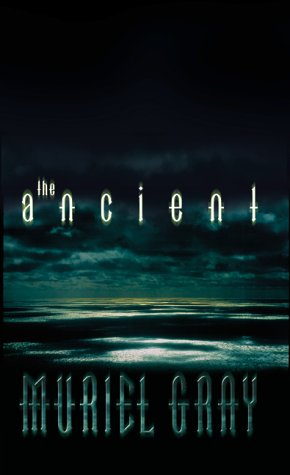
The Ancient – Muriel Gray, 2000
Muriel Gray is hardly a household name in the horror genre. It’s a shame, as The Ancient is about as streamlined and tightly-wound as a horror can be.
It starts with a nasty ritual in a Peruvian rubbish tip, but The Ancient is a claustrophobic thriller onboard a cargo ship. Something lurks within the holds, amongst the piles of recently-loaded trash, With nowhere to run, the crew and unlikely passenger Esther must face an ancient and deadly evil with a plan that might endanger the world…
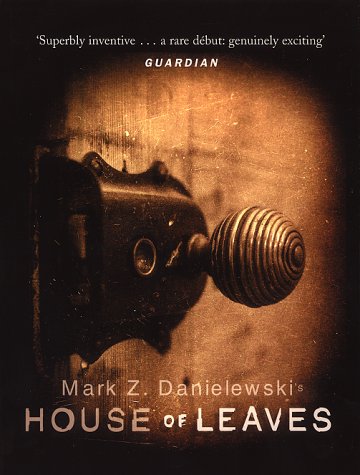
House of Leaves – Mark Z. Danielewski, 2000
Horror has been taken in some pretty post-modern directions. House of Leaves is one of the more extreme examples; a novel inside a novel where formatting of text, images, footnotes and diagrams adds to the themes and imagery of the story itself. It demands your willingness to engage with it but as an immersive experience it’s original and often very effective.

Coraline – Neil Gaiman, 2002
Neil Gaiman is one of the greatest fantasy writers of all time, and his work frequently shows his affiliation with alternative and gothic subculture. If not explicitly horrifying, his stories are consistently dark and occasionally transgressive. He’s no stranger to children’s fiction either, but Coraline isn’t a normal slice of YA. Coraline is a horror novel for (but not limited to) children.
A dark adventure, Coraline concerns the eponymous character and her move with her disconnected, workaholic parents into a flat in an old house. But Coraline finds her way into a strange new world, a twisted version of her own, where her Other Mother and Father have buttons sewn over their eyes…
There’s frightening imagery for children and adults in Gaiman’s novel. If you like it, be sure to read the similarly pitched The Graveyard Book which, if less grounded in horror, might be the better novel of the two.

Let the Right One In – John Avjde Linqvist, 2004
Every now and then, a vampire novel turns the genre on its head, like a sleeping bat suddenly righted. Let the Right One In is such a novel.
12 year-old Oskar lives in a dreary Stockholm suburb. He’s a misfit: friendless and a target for bullies. But when a mysterious girl appears at night outside his apartment block, Oskar finds someone who might be able to relate to him. Meanwhile, the body of a murdered boy is found in the nearby woods, drained of blood…
Let the Right One In is bleak in a particularly Scandi way. But it has more than a hint of Stephen King about its prose too. More sprawling than its adaptations, it’s a must-read for genre fans.

Fledgling – Octavia E. Butler, 2005
Fledgling begins as an amnesiac girl wakes in a cave. She’s blind and wounded, but soon discovers she has an appetite for blood and flesh. Heading out into the world, our fledgling vampire encounters an ally who helps her investigate her origins and rediscover who she is. Vampire novels are by their very nature horrifying, but Fledgling is more interested in the relationships formed between vampires and their willing prey, as well as in the sociology of a vampire nest.

Lunar Park – Bret Easton Ellis, 2005
Bret Easton Ellis is most famous for his novels Less Than Zero and American Psycho. The latter pushed the limits of horror (or violence, at least) so far that his publishers refused to take it. But it’s Lunar Park that appears most on the internet’s Best Horror lists.
Lunar Park is a ghost story, but it’s on Ellis’s terms. It’s as drug-and-drink-fuelled as his other work, but more concise than his stream-of-consciousness prior novels. But whilst it’s less kaleidoscopic, it’s more metafictional. Ellis himself is the main character; the book a fictional memoir of his life as he battles the (perhaps literal) ghost of his estranged father.

Haunted – Chuck Palahniuk, 2005
Haunted is another postmodern take on the genre, and could be the most disgustingly entertaining book on this list. Comprised of short stories bound up in an overarching narrative, Palahnuik’s live reading of the notorious Guts actually caused people to pass out. Not for the faint of heart – or the easily offended – but for those who want to see the limits of horror (and taste) pushed and broken, Haunted should do the trick.

War War Z – Max Brooks, 2006
An epistolary novel, World War Z collects the accounts of people from all around the world as the zombie apocalypse hits. It’s a dippable book – by switching characters and settings in every chapter, it can’t be said to be a page-turner in the traditional sense – but it’s visionary, with megahordes of zombies, underwater scenes and some bruising combat sequences laid out to a level of detail that has surely never been seen before in its genre. Brooks is a clear zombie aficionado, and his knowledge and flair propel zombies lurching into imaginative new territory.

Heart-Shaped Box – Joe Hill, 2007
Joe Hill has a legacy to live up to, but his bibliography is so far remarkably solid. Heart-Shaped Box is his debut, and lays down his hallmarks: tight plotting, channelled imagination and a penchant for rock and roll references.

John Dies at the End – David Wong, 2007
Of all the horror novels on this list, John Dies at the End might be the most surreal. David Wong plays himself as the narrator of a lurid tale as he recounts his adventures to a journalist. He and John are freelance detectives who specialise in the supernatural, and their latest case will take them to the very limits of imagination (and believability).
The novel started life as a web serial, and you can see traces of that pedigree in its episodic, freewheeling structure, as one segment tries to out-do the last in terms of gore and the bizarre. There are monsters made of meat, mysterious dead bodies, and projectile doggy diarrhoea. Take a deep breath.
New Blood: 2010 to Present Horror Novels
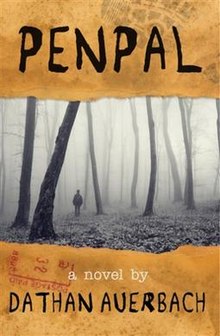
Penpal – Dathan Auerbach, 2012
Penpal is a novel of its times, based on creepypasta stories that author Dathan Auerbach posted online before coalescing into a cohesive narrative. Like any well-timed campfire story, urban myth or horror blog, Penpal can get pretty scary. I’m not ashamed to say I got up out of bed to check all my doors were locked after reading the opening chapters. Its amateur origins show through – the writing isn’t as polished as the more-traditionally published books on this list – but as a reflection of horror in the 2010s, Penpal is pretty bang on.
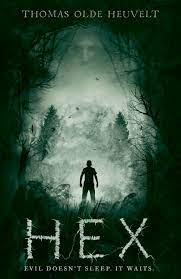
HEX – Thomas Olde Heuvelt, 2013 (Dutch) / 2016 (English)
I picked HEX up after judging it by its cover. I was shopping for books for my honeymoon at the time. It proved to be an absolute chiller – so vivid it’s like the horror is happening in front of you. Or behind you…
I read the English translation, which transplants its original setting from the Netherlands to New York State. The ghost of a 17th century witch appears randomly in the town – in the streets and parks, even in houses. The townsfolk track her on an app – “HEX” – and are forbidden to record her or tell the outside world about her. Naturally, the town is threatened when these covenants are broken…
With its sensationally-spelled title and talk of apps, you’d be forgiven for thinking HEX is gimmick-horror of the first degree. But it’s a supremely unsettling modern horror and unafraid to land some shocking punches.

Night Film – Marisha Pessl, 2013
Night Film is slightly more than just a novel. Opening it is like beginning on your own investigation into the mystery of Ashley Cordova, daughter of enigmatic film director Stanislaus Cordova, found dead in an NY warehouse.
Our tale spans the horror and detective genres, and uses magazine articles, screenshots and transcripts to enrich the world it creates. As the story continues, so our own escape routes are cut off. A smart and immersive read.
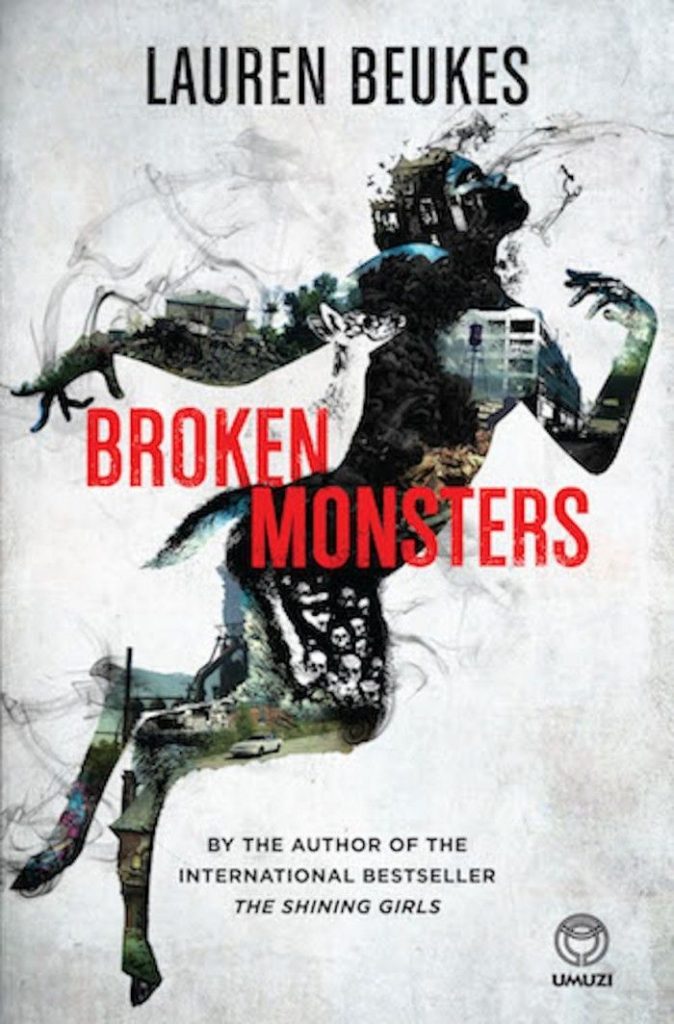
Broken Monsters – Lauren Beukes, 2014
Broken Monsters isn’t actually a horror (see The Silence of the Lambs earlier on this list), but it seemed to crop up on quite a few ‘best horror’ lists, so it earns its spot on this one. It may not be a horror but it sure is horrifying; a particularly gritty police procedural thriller that kicks off with the find of a heavily mutilated body. It isn’t the first.
The Detroit setting is particularly evocative, the core story nice and nasty. There’s room to accommodate some subplots too, which are equally unafraid to get confrontational and dark.

Horrorstör – Grady Hendrix, 2014
Horrorstör is a joy to read. Hell, it’s a joy to look at. Horrorstör is laid out like an IKEA catalogue (if you’re unaware, IKEA is a Swedish flatpack furniture company notorious for its labyrinthine megastore and its meatballs. Yes… really). Its chapters are named after home furnishing products and even accompanied by diagrams and illustrations. But does its story support its presentational ambitions?
Hendrix is a horror aficionado, able to identify and play with tropes of the genre. He builds his book out of likeable characters, a tight, effective setting and an undeniable sense of satire and playfulness. I read it with a broad smile on my face.

Bird Box – Josh Malerman, 2014
A Netflix adaptation catapulted Bird Box into the spotlight in 2018. Or rather, a viral trend based on its premise did. In Bird Box, everyone is afraid to open their eyes, because what they might see could turn them mad, leading them to kill themselves.
The story is structured around flashbacks. As Malorie leads two children downriver, we learn a little more about the events leading to this apocalypse…
Having read all the books on this list, I can tell you I enjoyed some more than others. But I try to remain impartial in the descriptions. Bird Box was something else though. Lazily plotted, with narrative elements that smack of convenience and, in the final acts of the book, a jaw-dropping lack of knowledge of basic human anatomy. I find it unbelievable it ever got past an editor, much less turned into a film. I can only hope it appeared on so many ‘best horror’ lists due to the compilers copying other lists, rather than because they thought it was good. Anyway, it’s here, but I wouldn’t personally recommend reading it.
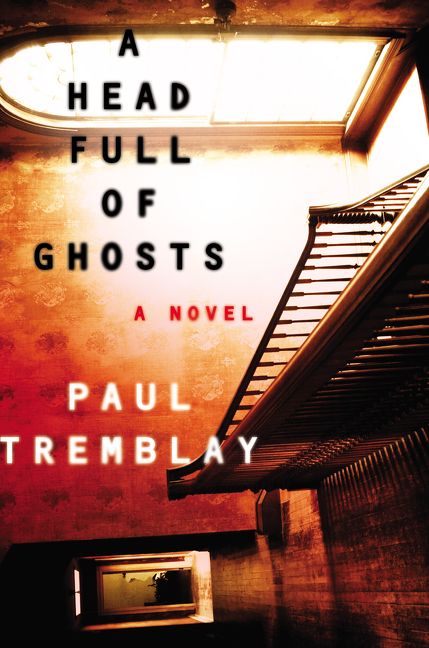
A Head Full of Ghosts – Paul Tremblay, 2015
I find that ‘referential’ horror novels are gaining in popularity – books which incorporate homages to classics (and obscures) of the genre into their own stories. A Head Full of Ghosts is on such book, and I really enjoyed spotting references – when I wasn’t just plain gripped and terrified.
The story is related by grown-up Merry Barrett who, when she was eight, lived through the apparent possession and exorcism of her sister Marjorie. Merry doesn’t understand everything she sees (and if you know The Exorcist, the book’s central inspiration, you can guess some of what goes on) and she makes for excellent eyes to see the story through.

Things We Lost in the Fire – Marianna Enriquez, 2016
Things We Lost in the Fire frequently sneaks onto best horror novel lists despite being a short story collection. Argentine author Mariana Enriquez conjures tales of disaffected characters presented with the grotesque or unnatural. Often, Argentina and city of Buenos Aires become characters in their own right: humid, pungent and dangerous.
The short stories are not connected but they build to more than the sum of their parts. Together they paint a vivid and disturbing picture…

The Changeling – Victor LaValle, 2017
There is a point, about a hundred pages into this book, when things change. And they change hard. Up until then, The Changeling is a polite, literary novel. It concerns Apollo Kagwa, a loving husband and book dealer, as he becomes an excited new father.
However, a tragedy hits Apollo and life is realigned. Those he thought he could trust are now to be blame for destroying what he once held dear to him. The Changeling uses several fairy tale tropes to tell its affecting, thoughtful story.

The Silent Companions – Laura Purcell, 2018
Out of all contemporary authors, I think Laura Purcell is the most similar to me – a writer who clearly loves the tropes and moods of the gothic novel.
The Silent Companions is a Victorian ghost story. Recently widowed Elsie is sent to her late husband’s estate. There are locked doors, historical subplots and the silent companions themselves – painted wooden figures which surely can’t move around on their own… This is an absolute pleasure to read.

The Devil and the Dark Water – Stuart Turton, 2020
Stuart Turton piqued the interest of discerning readers with his science fictional neo-murder mystery The Seven 1/2 Deaths of Evelyn Hardcastle, a novel with one narrator (but many POVs) that drew as much from Groundhog Day as from Agatha Christie. Creeping closer to (but admittedly not quite reaching) the horror genre comes his sophomore novel, The Devil and the Dark Water. Still, there’s much for the horror-lover to enjoy here.
One a cargo ship sailing out of the Colonial East Indies, a detective finds himself embroiled in a plot rich with demons, murder, and treachery. Nothing is simple; the narrative is knotty with red herrings and sly feints. But Turton’s deliberate concealing and revealing of facts is framed within a claustrophobic setting so vivid it’s pungent, and his characters are inspired and original. The Devil and the Dark Water demands your attention, but rewards it in spades.


Great list! I’m going to read those I haven’t yet but right now I’m losing my mind trying to find a novel that I read like 20 years ago and I cannot find it’s title anymore. Would you care to help? Here is everything I can remember from it:
I read it in French a long time ago (but it was translated from english) but cannot remember the title for the life of me! It was set in LA I’m almost certain. There were several POV characters I seem to remember, one was a cop for sure and the other an ex soldier who was an antihero. The plot was about a golden liquid drug that the ex-soldier (among other people) injected alongside AIDS infected blood to become super strong, like it was a botched treatment for AIDS that became a street drug. He used a special injector with two vials attached, one for the drug the other for the blood (it’s funny that I can remember pretty specific things about the book but not more).
I think the blood junkie name was Calvin Greymarch or Graymarch, something along those lines.
I don’t remember much more about it. I thought it was Tengu by Graham Masterton but it’s not (maybe the title is similar idk why I thought it was this one all this time but I’ve checked it out and this is not it…)
It’s very very gory I remember a scene where a woman licked the neck wound of a decapitated man for example. It was very sexual too. Pretty schlocky in general but it would make a great start for a Delta Green Campaign and I’m desperate to find it again.
Any help would be greatly appreciated!
Thanks.